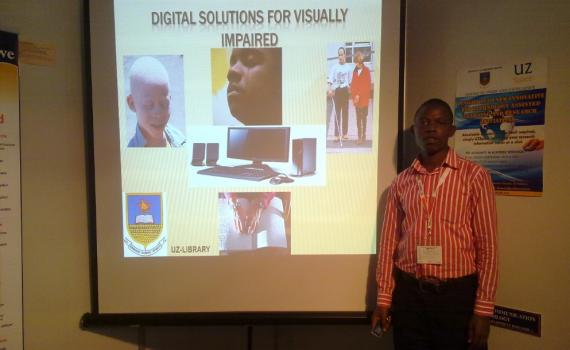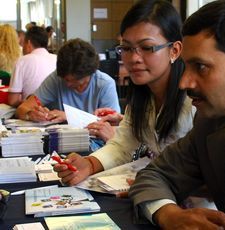
ABOUT THE RESOURCE
Using technology appropriately can enhance the library experience for all users, but is particularly significant for users with disabilities. Creating electronic resources as accessibly as possible is a useful starting point, but for some users specific technologies will be needed to access those resources. There are many FOSS tools available to support library users with a variety of needs, ranging from those with visual impairment or blindness, to users with dyslexia or who have difficulty using a mouse, or simply users who have limited reading ability or prefer to listen to text than read it on-screen.
The challenge
Most librarians are not specialists in this area and can be discouraged by the sheer number and variety of FOSS tools available to support disabled users. This is why EIFL has created a step-by-step guide to some of the most helpful and easy-to-use tools.
Many FOSS tools can be of benefit to library patrons and staff, those with disabilities as well as those without. There are literally thousands of FOSS tools available, from portfolio tools and software for designing accessible learning objects through to simple widgets and programs to help you see the cursor on your screen.
Before using the guide
- You need to have a good idea of the kinds of people you are trying to benefit. First of all you need to identify what accessibility needs your users have that are preventing them from accessing your resources easily. Of course you may also have staff with disabilities also, so don’t forget to identify their needs too. Be aware that just because you do not see certain types of user in your library (for example blind people) does not mean that they are not among your potential clientele - they may not visit the library because you have not yet installed software that can help them make use of your resources.
- Also be aware that many disabilities or needs are not visible simply by looking at someone (for example dyslexia, some visual impairments, limited literacy). The best way to begin to develop an impression of the disability-related needs of your users is to ask users (via posters, emails etc) to describe their needs and what kind of software tools would help them. Some of the tools described in the step-by-step guide would help many users (such as Sonar, for example) and so should perhaps be adopted regardless of the results of your needs-analysis activity.
- Once you have identified your priorities in terms of which accessibility tools you will offer to your users, you then have a choice of software options available from amongst the many FOSS tools available. This step-by-step guide is intended to introduce a range of the best and easiest-to-use tools that libraries can employ to better support their disabled users.
- When you have made some of these tools available to users, the next step is to ensure they are widely promoted - not just among the target group but to all library users, as there will undoubtedly be other beneficiaries.
Disability tools Facebook group
EIFL has also created a Facebook group to provide more information about Disability Support Tools for Libraries - here you can ask questions; provide anecdotes about how your library has (or has not) used them, and what the reactions of the library patrons has been; comment on which tools you prefer; or whatever you want to discuss related to the topic. To join the group just click here and request to join. Once your membership has been approved please post and add your comments - we want to make the group as active and vibrant as possible.
Relevant links
One of the most interesting packages of disability tools is AccessApps, which packages into a single download over 60 free and open source tools that will operate from a memory stick. The memory stick can be carried with the user to any Windows PC, and when inserted will provide access to all of the tools via its own menu system. The tools included in AccessApps are not only of benefit to users with disabilities, but also include mind-mapping software, audio-recording tools, presentation aids and image-editing tools.
- (jisctechdis.ac.uk/techdis/keyinitiatives/organisationaleffectiveness/enablingtechnology/accessapps) AccessApps homepage
- AccessApps download page - eduapps.org/?page_id=52
- (jisctechdis.ac.uk/techdis/technologymatters/assistivetechnology) More information about disability and accessibility tools and assistive technologies

SHARE / PRINT









